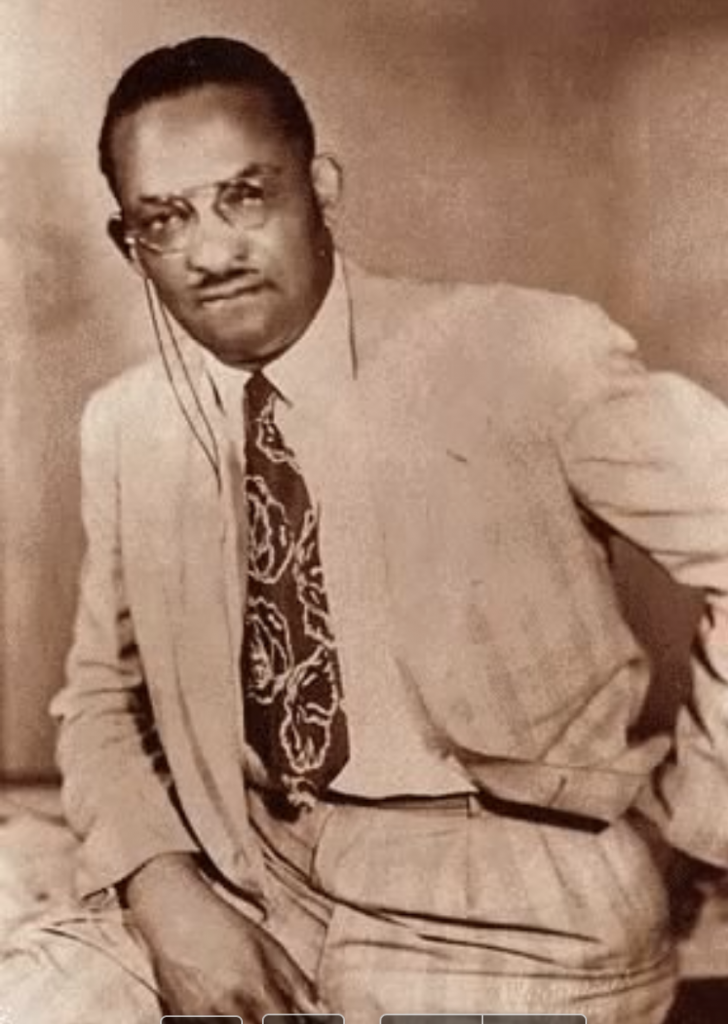
A photograph of Ossian Sweet, an African American physician in Detroit, Michigan, who was charged for murder in 1925, after defending his home from his white neighbors who were throwing rocks and surrounding his property threatening him and his family for moving into a white neighborhood. The purpose of this picture is to put a face to Sweet’s name. The Sweet case is a clear example of showing how white lives were valued much more than black lives in the 1920s. During his trial, police officers who were on site while the crime was occurring stated that Mr. Sweet attacked his neighbors completely unprovoked essentially framing Sweet for murder simply because he chose to move his family into a predominantly white neighborhood which was a very uncommon thing to do in the 1920s.
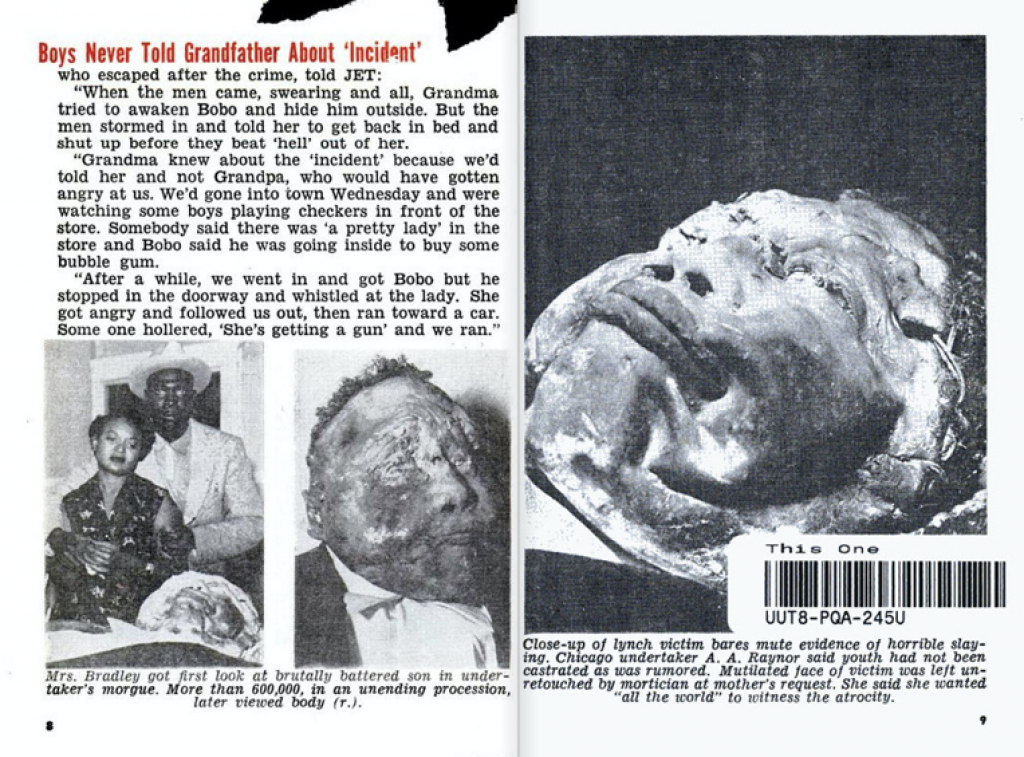
A photograph of Emmett Till after his body was found that was published by Johnson Publishing Company on September 15th, 1955, titled “Boys Never Told Grandfather About ‘Incident’” shows the heartbreaking photo of Till that was released to the public after his murder. The purpose of this photo was clearly to shock the American public and to show them the atrocious acts that African Americans are suffering at the hands of white racists in the United States. Fourteen-year-old Emmett looks completely unrecognizable in the photo.
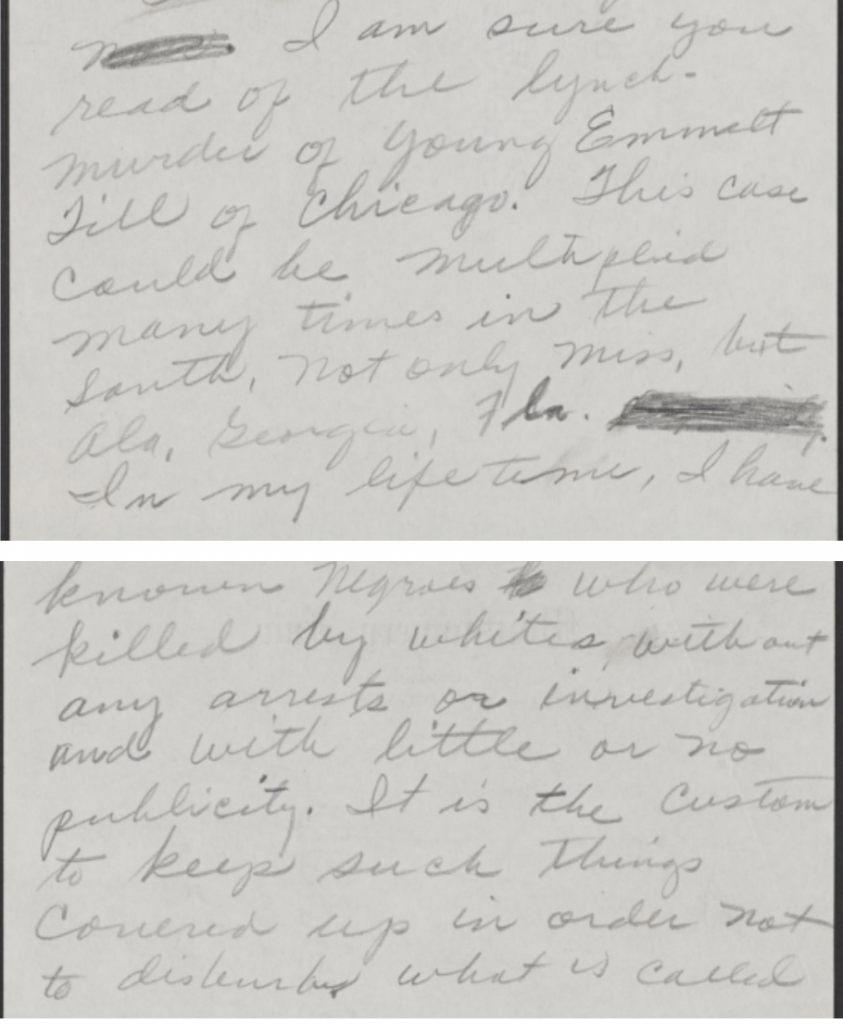
The final pages of a letter written in 1956 by Rosa Parks to an anonymous friend details the injustice that African Americans were facing at the hands of society as well as the justice system. She mentions the murder of fourteen-year-old Emmett Till in the beginning of the letter and explains that she has seen several African Americans murdered by whites. She emphasizes the lack of justice that is given for hate crimes that are committed against African Americans and at this point in history, it was the custom. African American lives were not seen as equal to white lives by society nor by authorities.
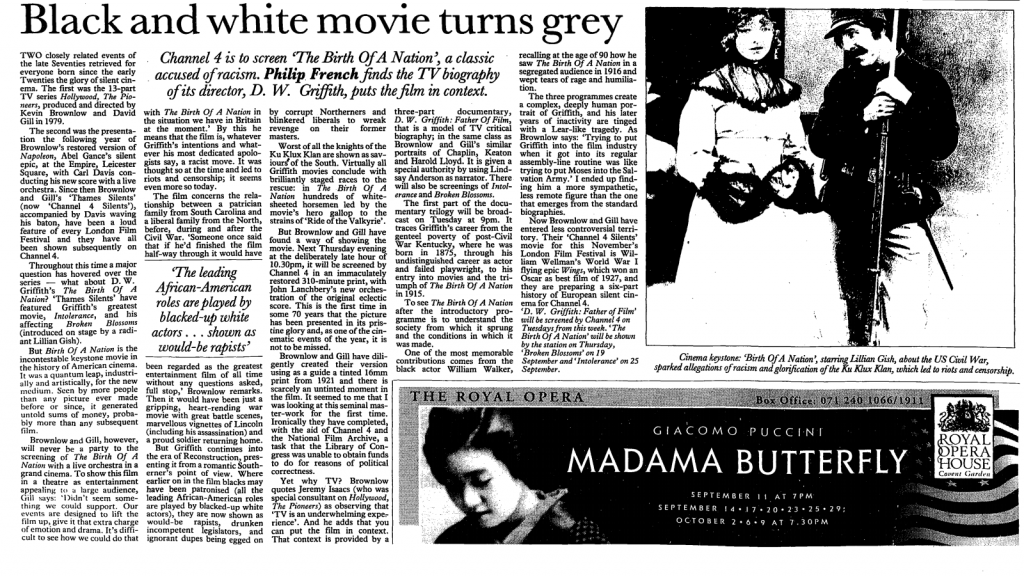
Philip French’s New York Times article “Black and white movie turns grey” written on September 5th, 1993, details how the director of the film, D.W. Griffith puts his infamous film Birth of a Nation into a historical context. The article describes how African Americans in the film were meant to be seen as rapists, lazy and dangerous, and most importantly as less than whites. This article connects to the myth of black criminality that would be later be seen and employed by both society and the justice system. Birth of a Nation acted as an accurate prediction of how race would operate in America in the years to come.
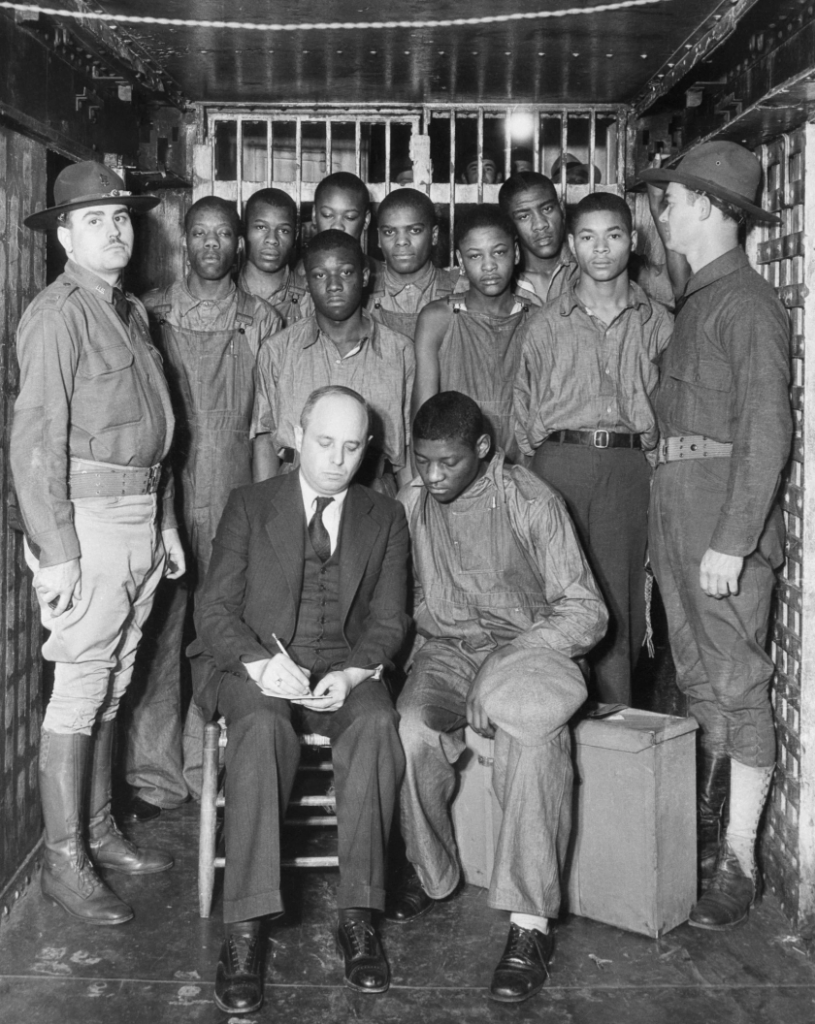
A photograph retrieved from the New York Times shows the nine Scottsboro boys who were falsely accused of raping two white women on a train in Alabama in 1931. The photograph shows all nine boys with their defense attorney, Samuel Leibowitz. This case relates to the Sweets case depicted above in the sense that these men were denied a fair trial simply because of the color of their skin. Their trial consisted of all white jurors and the trials were rushed not allowing the defendants to adequately prove their innocence. All boys were convicted and sentenced to death except thirteen-year-old Roy Wright.
